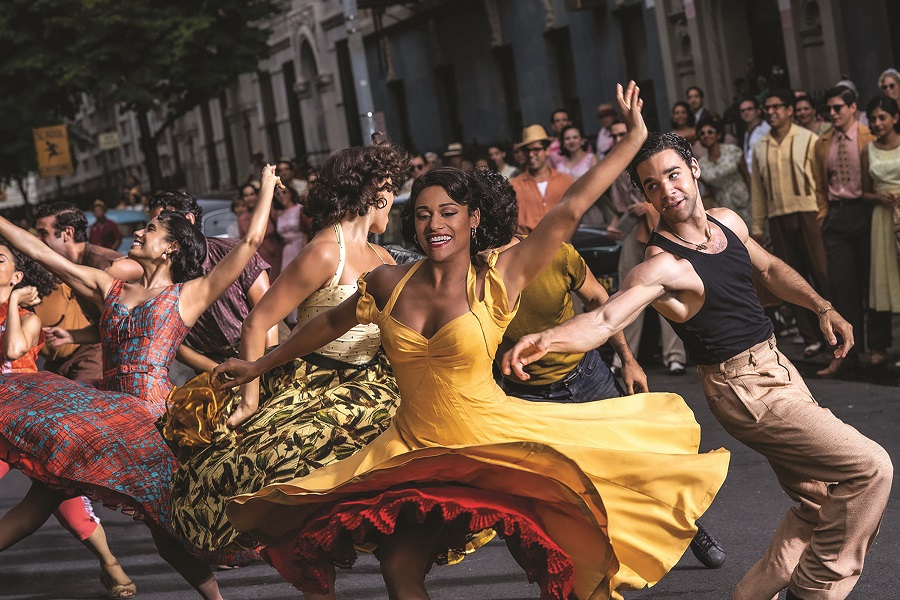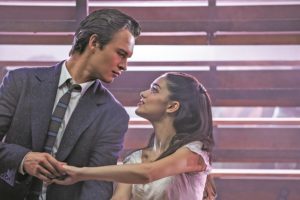When Jerome Robbins — born Gershon Wilson Rabinowitz on New York’s Lower East Side — first came up with the idea in 1947 for what would become the musical West Side Story, it was an update of Romeo and Juliet in postwar New York, a tragic romance between young lovers from families bitterly opposed to the match, one Irish American and the other Jewish American.
Robbins was a college dropout and aspiring ballet dancer and choreographer, a self-hating homosexual whose Jewish parents couldn’t fathom his artistic ambitions. He eluded military service in World War II because of his sexual orientation, and eventually named names of fellow Communist Party members to the House Un-American Activities Committee when threatened with the revelation of his homosexuality and subsequent destruction of his career. Robbins was a perfectionist, often cruel and widely feared, but one whom Stephen Sondheim called a true “genius.”

He approached Leonard Bernstein, a rising musical talent with whom he had made On the Town, and Arthur Laurents, a writer for stage and screen, with what was then called East Side Story. Both Bernstein and Laurents were gay sons of Jewish immigrants, though Bernstein, who was from a devout family and headed for prime-time celebrity, chose to marry and have children.
The project stalled until 1955, when Sondheim, also Jewish and gay and a 25-year-old Oscar Hammerstein II protégé with no Broadway experience, joined the team as a lyricist. At the time, gang wars in New York were making news, and the city was undertaking redevelopment of the West Side, creating the Lincoln Center performance halls and modern apartments where there had been tenements and industrial sites. Ever attuned to current events, Robbins steered the project to this new geography, which excited both Laurents and Bernstein.
When West Side Story premiered on Broadway in 1957 it depicted the rivalry between an ethnic white gang, the Jets, and a Puerto Rican gang, the Sharks, and the love story between Tony and Maria that crosses lines and explodes in violence. The result, as in most Shakespearean tragedies, leaves most of the principals dead and the survivors chastened.
The musical was an unlikely smash that hit Broadway like a Molotov cocktail. Bernstein’s score, which merged jazz and Latin rhythms with soaring romantic melodies, was monumental. Robbins’s direction and choreography, which mixed ballet and ballroom dancing with urban street aesthetics, turned musical comedy on its head. The book by Laurents and lyrics by Sondheim took the verismo traditions of Rodgers and Hammerstein to a new level.
This Shakespeare-based musical by four lefty Jewish queers was unleashed while America was deep in the Cold War and not yet recovered from McCarthy-era repression. It was a youth rebellion story without rock ’n’ roll, anticipating the social disruption soon to come.
The 1961 movie adaptation, co-directed by Robbins and a pre-Sound of Music Robert Wise, turned a Broadway phenomenon into a cultural marker. The movie was the way most Americans became familiar with the material, though stage revivals and endless high-school productions have helped to keep Robbins’s vision alive.
Now, 60 years later, Steven Spielberg and gay playwright Tony Kushner (a part-time Provincetown resident) have reawakened the show’s revolutionary spirit and eliminated the dated restraints of its closeted creators.
The new West Side Story movie, thanks to Spielberg, is a sumptuously filmed $100 million production (playing in theaters only) that manages a neat trick: it’s faithful to the 1957 show while offering a contemporary point of view. This update — by Kushner, with the support and encouragement of Spielberg, who directed Kushner’s screenplays for Lincoln and Munich —doesn’t feel anachronistic because it sticks to how things actually were in 1957. The difference is that artists are now free to accurately reflect that.
For example, the character Anybodys, a “tomboy” Jet wannabe in the original show and film, is now seen as transgender and played poignantly by nonbinary actor Iris Menas. The locations in the new film amply show the Latin presence in the neighborhood and street protests over its destruction, invisible previously. Police racism is more pronounced, and dramatic importance is shifted from Officer Krupke (a largely wasted Brian d’Arcy James) to Lieutenant Shrank (Corey Stoll), who reminds gang members of the Jets’ vestigial and doomed existence. The Jets’ hatred of Latin newcomers is subtly linked with that of present-day Trumpers, motivated by the loss of power and turf.

Kushner fleshes out the main characters, especially Tony and Maria, making them far less innocent and pure, and Ansel Elgort and Rachel Zegler deliver fresh performances with real singing voices. (Elgort attended the performing arts program at Fiorello LaGuardia High School, constructed next to Lincoln Center.) Tony’s experience with lethal violence is made explicit, along with his fear of repeating acts that put him in jail. Maria’s fierce independence is spelled out — she’s not just a victim of love. David Alvarez’s Bernardo has been turned into a professional boxer, and queer actor Ariana DeBose’s Anita is a vibrant force in the role that earned Rita Moreno an Oscar in the 1961 film.
Moreno, now 90, returns as the widow of store owner Doc, and sings “Somewhere” instead of Maria and Tony, at a point that perfectly suits the dramatic flow. In fact, most of the changes Kushner and Spielberg have made to the 1961 movie are thoughtful and useful, improving the narrative instead of mindlessly updating it.
Choreographer Justin Peck, for example, adheres to Robbins’s masterful concept for the dance scenes without repeating them. (The 34-year-old Peck is now resident choreographer at the New York City Ballet, Robbins’s home after leaving Broadway.)
The cinematography of Janusz Kamiński (a Spielberg collaborator since Schindler’s List) emphasizes long fluid takes and wide shots of the dancing, avoiding the choppy music video-style editing that even In the Heights employed. Kamiński’s use of desaturated color only heightens the beauty of Paul Tazewell’s costumes and the production design by Adam Stockhausen (a Wes Anderson regular).
The overall visual effect, despite the spectacle, is of a world threatened with self-destruction, from the movie’s demolition-ball opening to its mournful end. How is it possible that reviving a 1957 musical can make it a cautionary tale? Some things, like Shakespeare, are timeless.
